The thyroid is a butterfly shaped gland located at the front of the neck. It plays a mighty role for its small size. It determines the body’s metabolic rate, energy levels and temperature. Hyperthyroidism is the opposite, where there is an excess of thyroid hormones.
There are several types of hypothyroidism (underactive thyroid). The most common is Hashimoto’s thyroiditis, an autoimmune disease where the immune system attacks the body’s own thyroid tissue.
Thyroid hormones 101: TSH = Thyroid Stimulating Hormone, T4 = inactive/storage thyroid hormone which is most abundant, and T3 = active thyroid hormone.
Signs and symptoms: fatigue, tiredness, low energy, sluggishness, slow pulse, slow speech, hoarse voice, goitre (swollen thyroid gland), coldness, low body temperature, weight gain, constipation, brittle/slow growing hair and nails, coldness/numbness in extremities, confusion, depression, and in children, delayed growth and slow mental development. Check out my Energiser Bunny Tonic and Hello Sunshine Tonic.
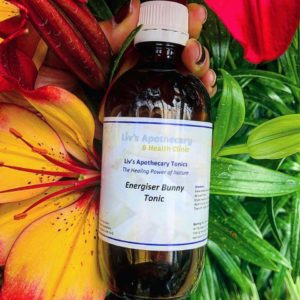
Progression: if left untreated, hypothyroidism may contribute to the following health conditions:
- Heart conditions – elevated levels of low-density lipoprotein (LDL) are more common with hypothyroidism. Hypothyroidism may increase the size of the heart muscle due to overwork. This may ultimately lead to heart failure.
- Mental health issues – depression is a symptom of hypothyroidism. This is exacerbated by fatigue, brain fog and irritability.
- Peripheral neuropathy – long-term hypothyroidism may damage peripheral nerves that connect information from the brain and spinal cord, to the rest of the body. Symptoms of damage include paraesthesia (pins, needles and numbness) or restless leg syndrome.
- Myxoedema – life-threatening condition where one experiences cold intolerance, lethargy, fatigue and even unconsciousness.
- Infertility – hypothyroidism interferes with ovulation.
- Birth defects – the baby may be affected if the mother has hypothyroidism.
Causes: like most autoimmune diseases, Hashimoto’s has genetic involvement. A direct family member with an autoimmune condition (especially Hashimoto’s) greatly increases your risk. It is about seven times more common in women than men.
Hypothyroidism without autoimmune involvement may be caused by:
- Thyroid surgery (removal of all or part of the thyroid gland – in this instance thyroid hormone medication must be taken for life).
- Radiation therapy e.g. cancer.
- Medications – psychiatric patients may be treated with lithium which may cause hypothyroidism.
- Hyperthyroidism treatment – these people are treated with radioactive iodine or anti-thyroid medication, which damages the thyroid. This can swing the other way, resulting in hypothyroidism.
- Congenital disease – babies born with a defect or absence of a thyroid gland.
- Pregnancy – postpartum hypothyroidism may be developed during/post pregnancy. This may negatively affect the developing foetus and there is an increased risk of miscarriage or premature birth.
- Pituitary gland disorder – failure to produce TSH.
High cortisol caused by stress or steroid medication are associated with lower vitamin D levels. Vitamin D synthesis from sunlight depends on cholesterol, and cholesterol is the raw material for many hormones, including stress hormones (cortisol) and sex hormones (testosterone, oestrogen and progesterone). During times of stress, cholesterol is used up in the making cortisol, while vitamin D production is compromised.
Recommendations: diaphragmatic (deep and slow) breathing, gentle exercise (walking, swimming, light bike riding, yoga, pilates or tai chi), reading or journal writing, are some ways of unwinding to relieve stress.

Check out my Stress Less Tonic and Enhance Your Resilience to Stress Blog.
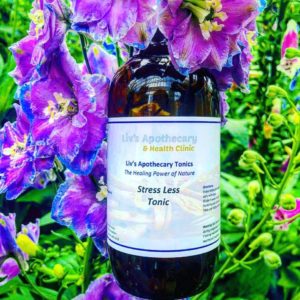
The most important mineral for the thyroid. Thyroid cells are the only cells in the body able to absorb iodine. Required for the conversion of the precursor thyroid hormone T4 into the active thyroid hormone T3.
Recommendations: a seaweed called kelp is the richest food source of iodine. Despite being vital for the thyroid, there is such thing as ‘too much of a good thing’. Research links iodine over-dose with hypothyroidism, autoimmune thyroid disease and possibly thyroid cancer. Additional iodine may also worsen pre-existing thyroid conditions by exacerbating symptoms of hypothyroidism. Take only the recommended dose of iodine, more is not better.
White table salt contains aluminium anti-caking agent to create its “free-flowing” characteristic. Additionally, it is bleached to achieve its glossy, white appearance, which is seen as more attractive than grey salt.
Many people toss out their iodised table salt in replacement for pink Himalayan rock salt. While this sounds like a healthy swap, it is not a direct swap as iodine is almost non-existent in Himalayan salt.
Celtic sea salt boasts more nutrition than pink Himalayan salt. Ordinary table salt is 100% sodium chloride with no trace minerals. One source states that Himalayan salt contains 36.8% sodium, 0.28% potassium, 0.16% calcium, 0.1% magnesium and 0.004% iron. While, Celtic salt contains 33.8% sodium, 0.16% potassium, 0.17% calcium, 0.3% magnesium and 0.014% iron. Celtic salt is the winner because it is higher in essential trace minerals and lower in sodium. This may be due to Celtic salt being a sea salt which is moister than Himalayan salt which is drier. Moisture/water is a carrier of minerals.
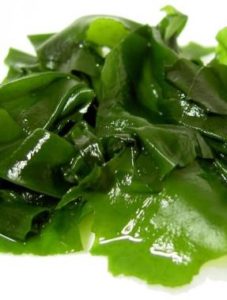
Selenium
Essential for the conversion of pro-active T4 to active T3 thyroid hormones. Selenium may also reduce inflammation involved in autoimmune thyroid disease. The mechanism behind this may be increased antioxidant production, as selenium has potent antioxidant activity. Additionally, selenium shows improvements in autoimmune thyroid patients by reducing thyroid peroxidase antibodies in blood makers, typically indicating autoimmunity.
Recommendations: to achieve your daily selenium intake, eat 2-3 Brazil nuts or 2 Thyroid Boosting Bliss Balls!
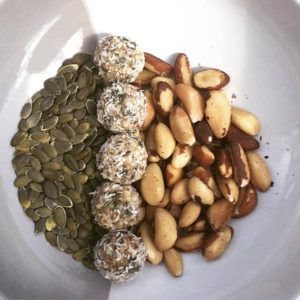
Zinc
Essential for the conversion of T4 to T3. Zinc may lower reverse T3, which is favourable as it functions against the thyroid. Reverse T3 is produced as a result of excess T4 breakdown, predominantly by the liver.
Recommendations: oysters is by far the highest food source, followed by seafood, red meat and pumpkin seeds. It is difficult to obtain sufficient zinc through diet alone, so supplementation may be inevitable. Deficiency is common in vegetarians and vegans.
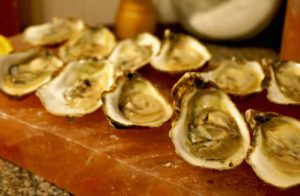
Associated with autoimmunity, including autoimmune thyroid disease (Hashimoto’s thyroiditis). There is a relationship between vitamin D deficiency and elevated thyroid antibodies, as seen in autoimmunity.
Recommendations: during summer months, exposure arms and legs to sun for the length of time it takes for your skin to slightly turn pink, minus 10 minutes. During winter months, it is near impossible to obtain adequate vitamin D, therefore, supplementation is required. I take it in the form of cod liver oil with added vitamin D, which provides vitamins A, D and omega 3 all in one.

Iron
Anaemia and hypothyroidism is a chicken and egg situation. Hypothyroidism may cause anaemia due to reduced stomach acid production and absorption of iron, or due to heavy menstruation in women resulting in increased blood loss.
Anaemia is associated with chronic disease, including hypothyroidism, due to inflammation being heavily involved in chronic disease. Anaemia due to inflammation is a natural, protective mechanism that the human body uses to limit the amount of iron available when potentially harmful invaders enter the body. All living organisms, including bacteria and cancer cells, depend upon iron to sustain life, similarly to humans and plants. When the body senses a threat, haemoglobin (red blood cells) are stored in ferritin (iron storage) to starve the foreign invader from iron it desires. For this reason, the ratio between haemoglobin and serum ferritin is used as a marker of chronic inflammation. An individual with anaemia of chronic disease, will experience a decline in haemoglobin, following the onset of inflammation due to the presence of infection or disease.
Recommendations: determine the cause in all cases. If the cause is hypochlorhydria (low stomach acid), drink 1 tablespoon of apple cider vinegar or juice from a lemon (optional with water) 10-15 minutes before meals. Particularly iron and protein containing meals, as this will enhance iron absorption and aid protein digestion which requires an acidic environment.
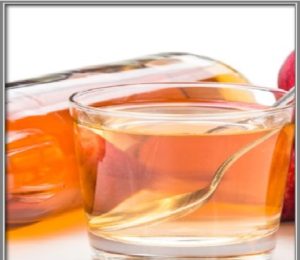
If the cause is thyroid disease, treat that with utmost priority and anaemia should resolve consequently.
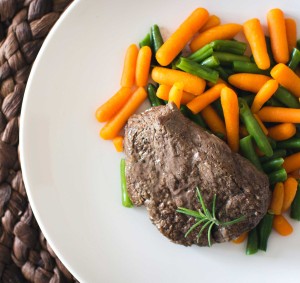
Individuals with compromised absorption are likely to be deficient in nutrients required by the thyroid. All autoimmune conditions, and many other health conditions, are strongly linked to compromised gut function, particularly leaky gut (intestinal permeability).
“All disease begins in the gut” Hippocrates, we are only now beginning to understand how accurate he was! This is especially true for autoimmune conditions, but hypothyroidism is no exception. Poor gut health can suppress thyroid function and trigger Hashimoto’s, as this is an autoimmune condition. About 80% of the immune system is located in the gut, hence why the gut and immune system should be considered the same organ system.
One little known role of gut bacteria is to assist in converting T4 to T3. About 20% of this conversion occurs in the GI tract and requires an enzyme called intestinal sulfatase, which comes from healthy gut bacteria. Intestinal dysbiosis significantly reduces this conversion. To restore thyroid function, the gut and thyroid must be restored simultaneously.
Recommendation: follow a gut healing treatment plan and consult a Naturopath.

Goitrogens
Soy is the number one goitrogenic food. It is found in the form of tofu, soy milk and many processed foods. Fermented soy e.g. tempeh (fermented tofu), miso (like the soup) and natto (less common in NZ), are less problematic. This is explained in detail in the book “The Whole Soy Story” by Kaayla T. Daniel – a great read. Other foods include, brassica/cruciferous vegetables (broccoli, cauliflower, cabbage, Brussel sprouts, kale, cavelo nero, radish, daikon radish, bok choy, pak choy, mustard greens, rocket, watercress, mizuna, turnips and maca), and to a lesser extent, millet, peaches, peanuts, pine nuts, spinach, strawberries and cassava. These foods may reduce thyroid function by blocking activity of the enzyme thyro-peroxidase. Large quantities may inhibit healthy function of the thyroid gland, especially with a pre-existing thyroid condition and/or deficiency of nutrients required by the thyroid.
Recommendations: cooking these foods and discarding the water reduces goitrogen levels. Raw goitrogenic foods are more problematic than cooked. It usually only becomes an issue when people go crazy on green juices and smoothies or eat kale until it’s coming out of their ears.
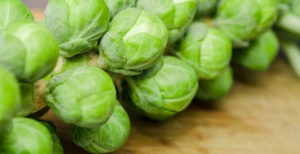
Coconut oil
Coconut is comprised of unique fats called medium chain triglycerides. Other fats in our diet are long chain fatty acids. Short chain fatty acids are produced in our colon and are beneficial for gut health. However, medium chain fatty acids are not stored in the body as fat, unlike the other fatty acids, they are transported directly to the liver to be used immediately as an energy source.
Recommendations: eat 1-3 tablespoons every day. Use in exchange for cooking oils. It is delicious in smoothies, baking and sweet recipes. In NZ, coconut oil is liquid during summer months and solid during winter months. Buy virgin, cold-pressed coconut oil, not ‘RBD’ (Refined Bleached Deodorised) or ‘deodorised’ as this is made from coconut copra/dried kernel, which may have been chemically treated.
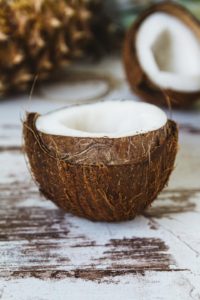
Halides
Chlorine, fluoride and bromine are the same molecular weight to iodine on the periodic table (remember that crazy song you made up in 3rd form to remember the sequence?!). These chemicals compete for absorption with iodine and attach to the same receptors.
Chlorine is a key component of salt which is chemically sodium chloride. This is higher in table salt than Celtic or Himalayan salt. Chlorine is found abundantly in swimming and spa pools. There is more in spa pools due to the higher temperature which is more favourable for bacteria. For this reason we are advised not to submerge our head. Chlorine is also found in bleached products, cosmetics, polyvinyl chlorides (PVC), persistent organochlorides, pesticides, and it is a contaminant in drinking water and dairy products. Additionally, chlorine acts as an antibiotic in our gut by killing beneficial bacteria (read about Probiotics and Prebiotics).
Fluoride is found in tap water, toothpaste, mouthwash, some pesticides, some pharmaceutical medications (Prozac – antidepressant) and Teflon cooking equipment. Water fluoridation first began in NZ in Hastings in 1954. Its use rapidly spread throughout the 1960’s. Since then, population improvements in dental health have been attributed to this, despite dental hygiene education and increased dentist visits. Fluoride in drinking water is associated with many health conditions including, hypothyroidism, ADHD, chemical intolerance, heart disease, kidney disease, increased lead uptake (toxic heavy metal), neurotoxicity, osteosarcoma, pineal gland fluoride accumulation and skeletal (bone and teeth) fluorosis. Using fluoridated toothpaste where fluoride is applied directly to the teeth may be beneficial in strengthening tooth enamel, as opposed to drinking it in mass quantities and it accumulates in our organs causes negatively effects. Read more about Fluoride Free NZ.
Bromine was found in pesticides prior to 2007, now it is only found in some imported produce, dried herbs, spices, grains, cereals, citrus flavoured soft drinks (Gatorade and Mountain Dew), wood products, hair dyes, textiles, plastics (new car smell), swimming and spa pool treatments, and some flours/bakery goods contain potassium bromate as a dough conditioner.
Recommendations: to reduce chlorine; swim in the sea rather than swimming pool, use natural cosmetics, and use a water filtration system that removes chlorine. To reduce fluoride; use a water filter that removes it, avoid medications where possible, and use non-Teflon cooking equipment. To reduce bromine; choose locally grown foods, reduce soft drinks, use natural hair dyes, and buy organic baking flour.
From person, clinical and anecdotal experience, I have learnt that healthy levels of insulin are imperative for thyroid function. Worsening of hypothyroidism is common in followers of LCHF (Low Carb High Fat) and Paleo diets.
Recommendations: one way around this is carb cycling. This involves eating LCHF most of the time (i.e. 5/7 days), but including more carbohydrates and less fat a couple of days a week (i.e. 2/7 days). This resets glucose and insulin metabolism. For the majority of people who do not follow this lifestyle, consume natural, whole and unprocessed carbohydrates i.e. fruit, vegetables, wholegrains and legumes, for optimal thyroid function.
Yoga
Particular yoga poses stimulate different organs in the body. One of the most effective for hypothyroidism is shoulder stand (sarvangasana). It stimulates the thyroid due to compression of the gland. Additionally, it stimulates other glands in the head region, such as the pituitary and pineal glands, which also contribute to thyroid function. Other beneficial poses include, fish (matsyasana) and plow (halasana).
Recommendations: attend a yoga class to have these poses demonstrated to you by an experienced teacher. If this is unavailable to you, familiarise yourself with the poses online or from a book. Start with 30 seconds for each pose, building up to 1-2 minutes.

Singing/chanting
Believe it or not, singing and chanting stimulates the thyroid through vibration.
Recommendation: sing or hum to music for about 5 minutes a day. Chanting is common in yoga classes.
Bladderwrack (Fucus vesiculosus) is a seaweed not a herb. It is a rich source of iodine, which is vitally important to the thyroid.
Bacopa (Bacopa monnieri/monniera) has been shown in research to increase T4 thyroid hormone.
Withania/Ashwagandha (Withania somnifera) has been shown to lower cortisol and balances T4 levels.
Other herbs can be used to alleviate symptoms of hypothyroidism e.g. St. John’s wort for feeling low, Ginger for coldness and Ginkgo for slowed brain function.

Endocrine interrelationships
The endocrine system includes the thyroid gland and glands that produce hormones regulating metabolism, growth and development, tissue function, sexual function, reproduction, sleep and mood. Insulin resistance and dysglycaemia (blood sugar dysfunction), adversely affects thyroid physiology, this is an example of the interplay in the endocrine system.
Consult with me to determine the root cause of hypothyroidism in your individual case. As you can see from this article, hypothyroidism is complex and multifaceted. I can investigate if there are any other endocrine disorders interplaying. Dosages of herbs also need to be determined by a Naturopath/Herbalist.
Check out these Thyroid Boosting Bliss Balls ~ the perfect snack for anyone suffering from underactive thyroid.
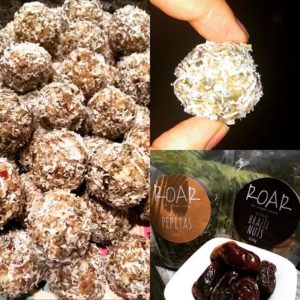
Each Thyroid Boosting Bliss Ball contains approximately 128mcg of selenium. The recommended daily intake (RDI) for men is 70mcg and women 60mcg, but 200mcg per day is beneficial for hypothyroidism and optimal health. My prescription: 2 delicious Thyroid Boosting Bliss Balls daily!




